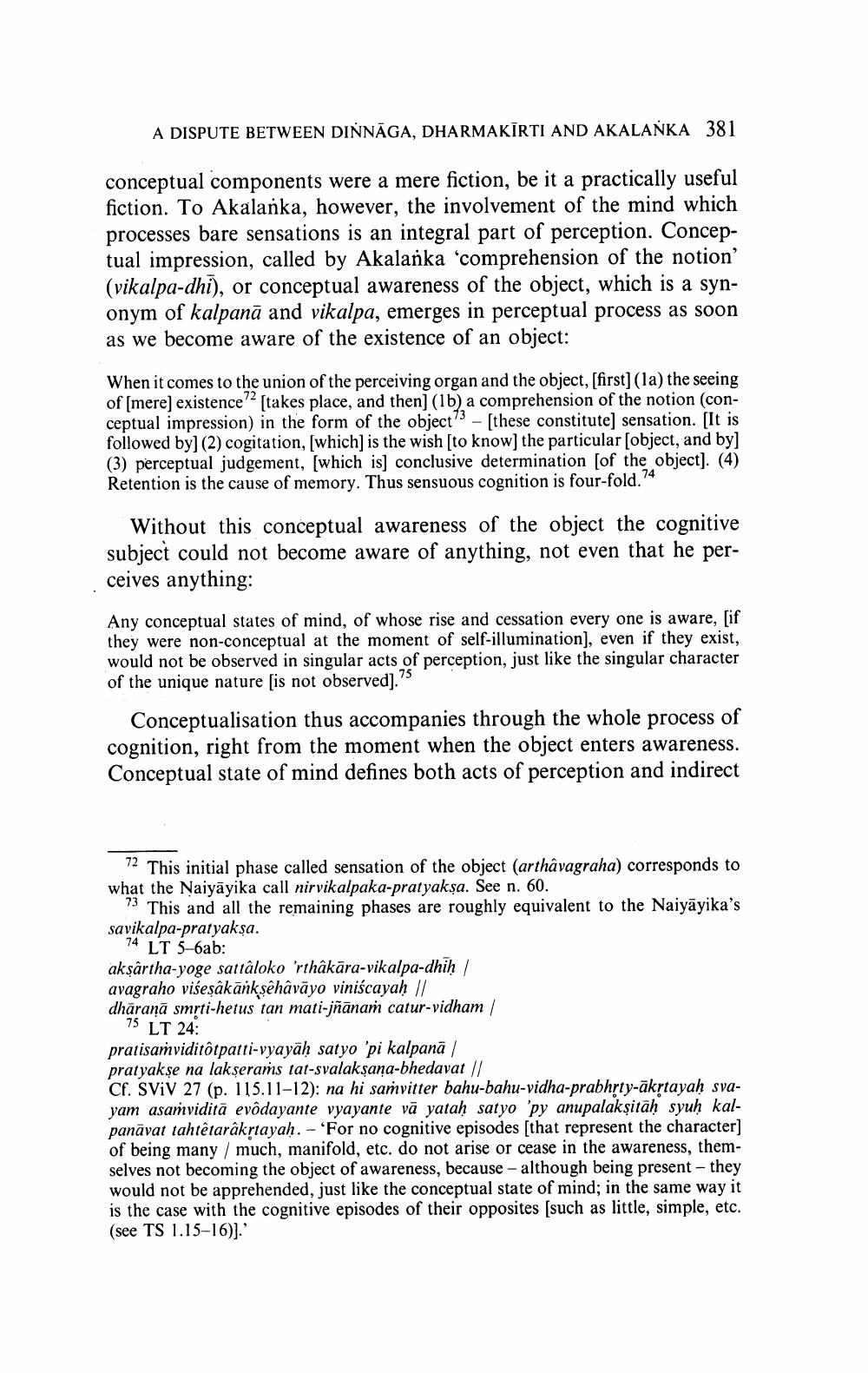________________
A DISPUTE BETWEEN DINNĀGA, DHARMAKĪRTI AND AKALANKA 381
conceptual components were a mere fiction, be it a practically useful fiction. To Akalanka, however, the involvement of the mind which processes bare sensations is an integral part of perception. Conceptual impression, called by Akalanka 'comprehension of the notion' (vikalpa-dhi), or conceptual awareness of the object, which is a synonym of kalpanā and vikalpa, emerges in perceptual process as soon as we become aware of the existence of an object:
When it comes to the union of the perceiving organ and the object, (first) (la) the seeing of (mere) existence (takes place, and then) (1b) a comprehension of the notion (conceptual impression) in the form of the objects - [these constitute) sensation. [It is followed by] (2) cogitation, (which) is the wish (to know) the particular (object, and by] (3) perceptual judgement, (which is] conclusive determination (of the object]. (4) Retention is the cause of memory. Thus sensuous cognition is four-fold. 74
Without this conceptual awareness of the object the cognitive subject could not become aware of anything, not even that he perceives anything:
Any conceptual states of mind, of whose rise and cessation every one is aware, [if they were non-conceptual at the moment of self-illumination), even if they exist, would not be observed in singular acts of perception, just like the singular character of the unique nature [is not observed)."
Conceptualisation thus accompanies through the whole process of cognition, right from the moment when the object enters awareness. Conceptual state of mind defines both acts of perception and indirect
72 This initial phase called sensation of the object (arthâvagraha) corresponds to what the Naiyāyika call nirvikalpaka-pratyakşa. See n. 60.
"This and all the remaining phases are roughly equivalent to the Naiyāyika's savikalpa-pratyaksa.
74 LT 5-6ab: akşârtha-yoge sattâloko 'rthâkāra-vikalpa-dhih / avagraho višeşâkānksehāvāyo viniścayah // dhāraṇā smrti-hetus tan mati-jñānam catur-vidham/
75 LT 24: pratisarviditôtpatti-vyayāḥ satyo 'pi kalpanā / pratyakşe na lakşerams tat-svalaksana-bhedavat // Cf. SVIV 27 (p. 115.11-12): na hi samvitter bahu-bahu-vidha-prabhrty-ākrtayah svayam asamviditā evôdayante vyayante vā yatah satyo 'py anupalakṣitāh syuh kalpanāvat tahtêtarâkrtayah. - 'For no cognitive episodes (that represent the character] of being many / much, manifold, etc. do not arise or cease in the awareness, themselves not becoming the object of awareness, because - although being present - they would not be apprehended, just like the conceptual state of mind; in the same way it is the case with the cognitive episodes of their opposites (such as little, simple, etc. (see TS 1.15-16)].'




